As a consequence of our youth, it’s widely accepted that North America is a place of nature, rather than one of history. This opinion, however, could not be more wrong. In reality, the history of North America is as rich as any that of any other continent, home to many distinct cultures, and steeped in thousands of years of art, tradition, language and war. In particular, this article will showcase some of the lingering monuments and ruins of the Southwest United States’ many ancient cultures.
1. Buckhorn Draw, Utah
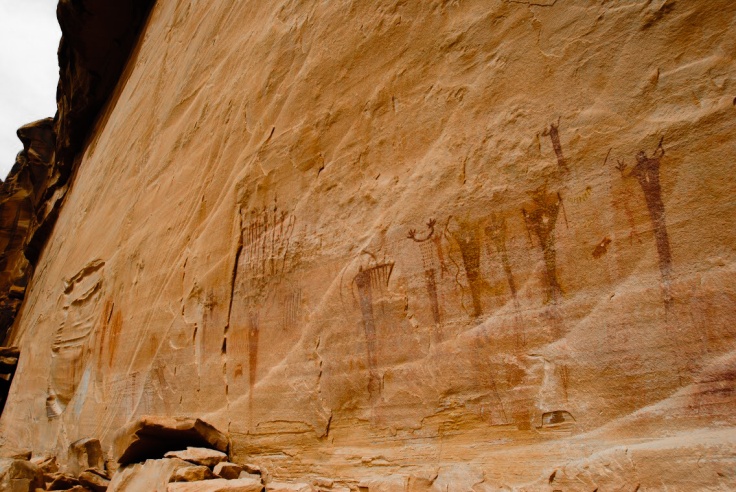
The impressive and ancient pictographs found in the San Rafael Swell are some of the most dramatic and extensive on the continent. These deserted paintings were once created by mixing red ochre with some kind of viscous liquid, possibly eggs or melted fat, and applying it to a freshly exposed sandstone face. The rock would then soak up the natural dye into its porous surface, wherein it could be retained for thousands of years.
In the case of the pictograph panel at Buckhorn Draw, the exact age of the art is unknown, although scientific dating methods have shown that these monuments are at least 2000 years old. In truth, the pictographs may be much older, as some experts suspect the artists of the panels to be of the Desert Archaic culture, indicated by the particular art style used. This style, known as the Barrier Canyon Style predates the art and techniques of the Fremont and Ancestral Pueblo cultures and could even mean these red figures predate the Pyramids of Giza by more than a millennium.
2. Newspaper Rock, Utah
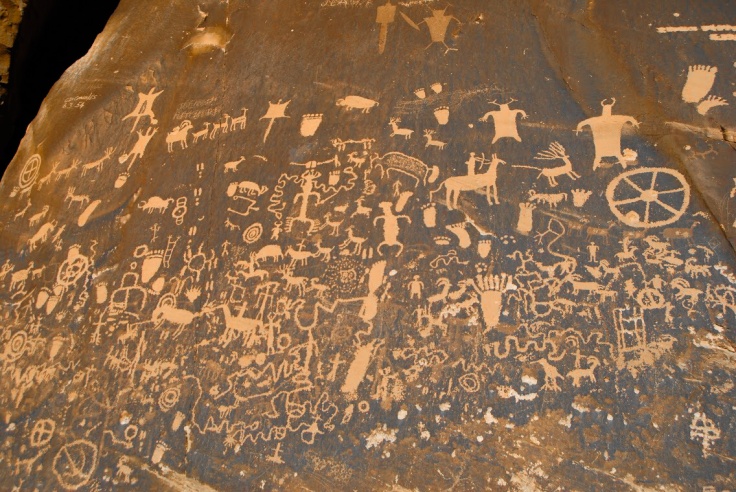
On the way into Utah’s Canyonlands National Park, you can find this oddity sitting just alongside the highway. Here, the designs are etched into the sandstone face using a small, precise instrument. This process scrapes away at the dark, desert varnish (oxidized minerals which had gradually come to coat the rock), to reveal the bright sandstone below.
Not indicative of any particular style, the petroglyphs found at Newspaper Rock come from 2000 years of varying cultures. Initially, these may have been etched by the very same people who painted the walls of the San Rafael Swell, but in time Ancestral Pueblo, Fremont, Navajo, Anglo and modern Pueblo cultures would all leave their legacy on the “rock that tells a story”.
3. Wupatki Ruins, Arizona
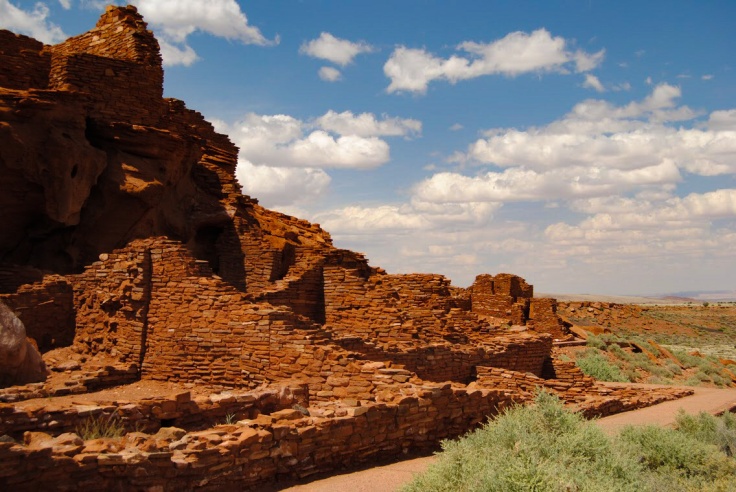
Located near Flagstaff, the Wupatki Ruins have an interesting and isolated history. The pueblo, built in the fifth century, reached its zenith in roughly 1100 AD when immigration boomed after the eruption of nearby Sunset Crater. The volcanic event spewed burning, nutrient-rich ash into the atmosphere; enriching the soil when it descended and thereby making the region more suitable to agriculture. Squash, beans and maize were the major crops produced; all of which benefited heavily from the new layer of ash, as aside from being nutrient-rich, it allowed the topsoil to retain significantly more water from rainfall.
Prior to the eruption, life at Wupatki would have come with several challenges, including arid soil and a lack of timber. Aside from easy access to a once-productive fresh water spring, one may wonder why, given such an unforgiving environment, anyone would choose to settle at this site…
As it turns out, the answer was likely trade. Evidence for this hypothesis comes in the form of various artefacts found at Wupatki which are distant in origin. Shells from the Pacific and Gulf coasts have been found here, implying that the pueblo may have been part of the main east-west trade routes at the time. More surprising still, is the eleven known graves of tropical parrots which would have been traded up from Central America and kept for their vivid feathers.
4. Bandelier National Monument, New Mexico
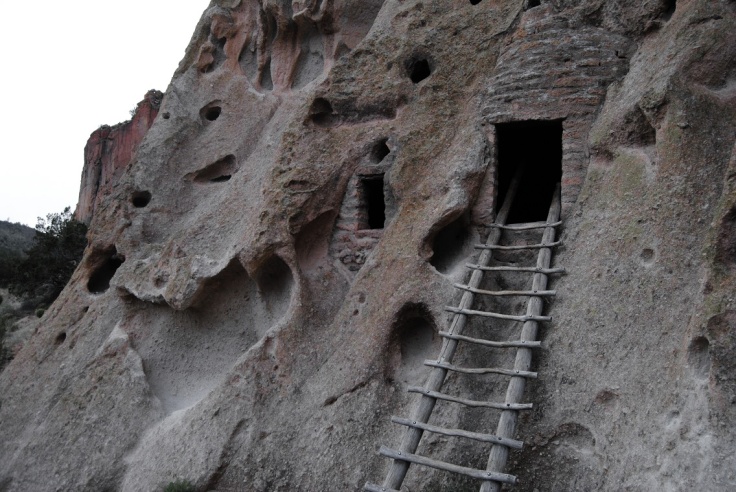
Unlike the arid plain surrounding Wupatki, the ancient village at Bandelier National Monument would have been practically paradisiacal. Situated in a deep, forested valley; the village sat aside a steady stream which was vital for both the continual irrigation of their crops as well as for hygeine and drinking. Interestingly, while many European cities are nestled on the banks of mighty rivers such as the Danube, the ancestral puebloans appear to have preferred to build their pueblos nearby smaller streams. This is likely because the smaller but continual flow would have been easier to divert, allowing for the controlled and sustainable irrigation of their fields.
To understand the history of Bandelier National Monument, one must first understand the history of the rise and fall of the Ancestral Puebloan culture. Beginning in the fifth century, the communities at Chaco Canyon and Mesa Verde began to establish themselves. These sites, located approximately 150km and 250km to the northwest, represented the golden age of the Ancestral Puebloans.
At their peaks, these metropoles reached a combined population of 6000 people and controlled the flow of trade and power in the area. By mid 1100s, however, an unknown force began to push the Ancestral Puebloans southward, out of their mighty cities. The common consensus among experts is that persisting drought eventually forced the population south, towards large rivers such as the Rio Grande in search of more arid soil to support their now-unsustainable populace.
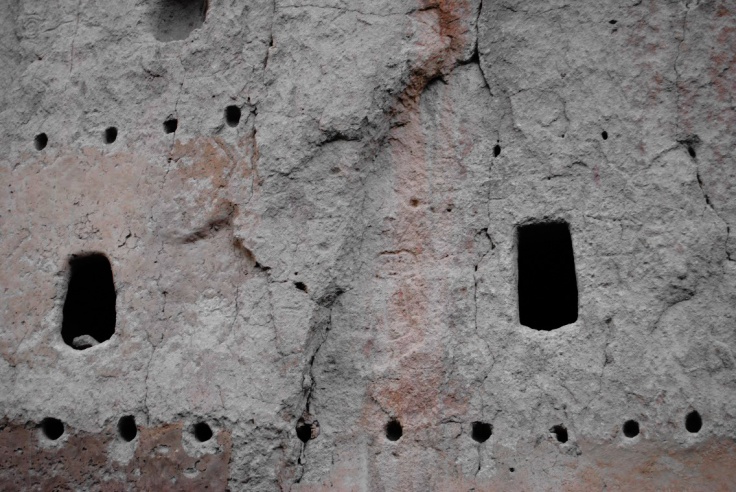
Along the way, the Bandelier site was settled, and eventually became a major economic and population centre over the following 400 years. In the two pictures above, you can see the winter homes of the Bandelier Site’s denizens, which have been carved into the cliff side. The reason for which these are believed to be winter homes is that they are south-facing, and would have been considerably warmer in winter than the stone pueblos on the valley floor, which they would have used during the growing season.
5. Mesa Verde, Colorado
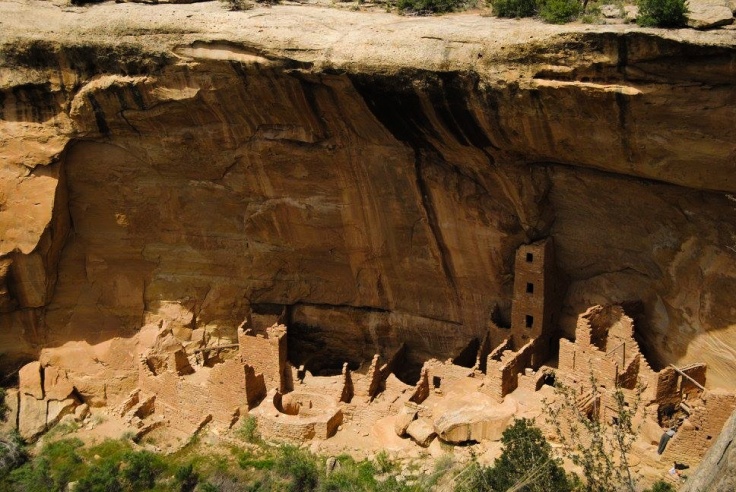
Finally, we have the crowning achievement of the Ancestral Puebloans. This is one of the many enormous and magnificent towns clinging to the edge of Colorado’s Mesa Verde or “Green Mountain”. As mentioned earlier, these pueblos possessed an enormous amount of power during their 700 year reign before becoming completely abandoned in 1300AD. This is the most extensive of all the ruins found in the United States and is worth every moment of your time. Please do visit one day.
I hope you enjoyed the photos in this entry and I hope even more that you learned something interesting and new! Be sure to follow us on instagram for the continuation of this World Canvas entry!

Wow! And you have visited all these yet! Certainly these are some of the best kept secrets, at least judging from what I come across in the online world. I’m not on instagram though, so I hope you continue here as well.
LikeLiked by 1 person
Yea 🙂 you don’t often hear about these sites, but they’re amazingly wonderful. Thanks for reading 🙂
LikeLiked by 1 person
Surely something would have been happening in North America a thousand years back though it appears it is not in a recorded format. Interesting “finds” in your post.
LikeLiked by 1 person
Exactly. Throughout most of the indigenous cultures in America and Canada (if not all) history and information was passed through the generations orally. Often, this caused factual information to become indistinguishable from myth after many years. A good example of this is a “legend” of the Dene people of Canada’s Northwest Territories. The story describes a young hunter who had to slay a hairy, elephant-like creature in order to gain permission to marry a chieftain’s daughter. Of course, when European colonisers first heard this story, they took it as a myth, but today, we know that the tale is actually (and accurately) describing a Woolly Mammoth–a creature that went extinct 10,000 years ago! I don’t know about you, but I find that so cool. Thanks for reading!!
LikeLiked by 1 person